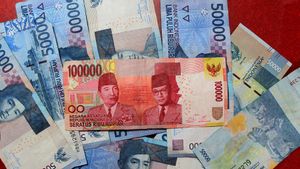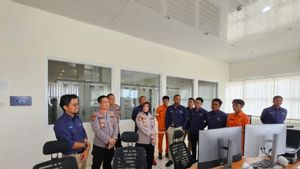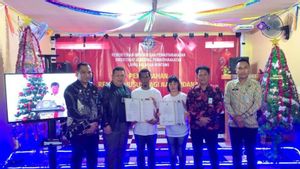JAKARTA – Drowsiness during the day, especially when activities are certainly annoying. In addition to reducing the level of concentration, the body is limp and tasks are not completed quickly.
This rare but experienced disorder by hundreds of thousands of people in America is caused by loose brain control. This disorder is indiscriminate, because it can be experienced by everyone including children and adolescents other than adults.
Visiting Sleep Foudation, Monday, May 24, narcolepsy or sleep-wake disorder that affects persistent sleepiness. The main symptom is excessive drowsiness during the day caused by the brain not being able to maintain and sleep properly.
Normally, sleep has a series of stages. Starting from the closed eyes to rapid eye movement (REM) that occurs in the last stage. REM is usually experienced an hour or so after starting to sleep.
In narcolepsy sufferers, REM sleep is irregular and often begins within minutes after sleep. This means it was experienced earlier than usual. In people with narcolepsy, the condition occurs due to changes in the brain that interfere with the way sleep works.
In effect, drowsiness persists during the day. According to the International Classification of Sleep Dissorder, Third Edition, narcolepsy is divided into two. Narcolepsy type 1 is associated with cataplexy symptoms, namely sudden loss of muscle tone.
Narcolepsy type 1 can also be caused by another thing, namely low hypoxycin levels. Hypoxycin is a chemical substance of the body that helps control wakefulness.
While narcolepsy type 2 is diagnosed as a cause other than low hypoxycin and not cataplexy. Type 2 has many similar symptoms but not because of hypotheses and cataplexy and there are 10 percent of cases.
In narcolepsy type 2 can also appear due to medical conditions such as head trauma, multiple sclerosis, and other diseases that affect the brain.
Narcolepsy disorder is most easily recognized because of the unbearable drowsiness that drives a person to sleep. These symptoms most often appear in monotonous situations. For narcolepsy sufferers, after a short nap then wake up more refreshed.
Another symptom of narcolepsy is the appearance of unconsciousness, although the eyes are not closed but for example a student in the class continues to write but only doodling important lines on paper.
In some cases, narcolepsy sufferers experience 'sleep paralysis'. This condition occurs when a person with narcolepsy feels unable to move during sleep. In diagnosing narcolepsy, doctors follow standard criteria for diagnosing sleep disorders.
The standardization is carried out to ensure accurate distinction between narcolepsy type 1, type 2, hypersomnia, and other conditions that cause excessive daytime sleepiness (EDS) or continuous daytime sleepiness.
The English, Chinese, Japanese, Arabic, and French versions are automatically generated by the AI. So there may still be inaccuracies in translating, please always see Indonesian as our main language. (system supported by DigitalSiber.id)








